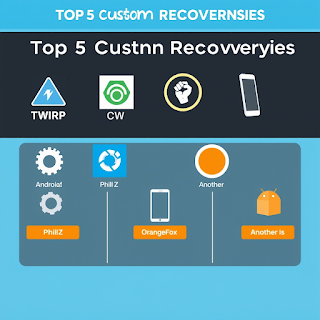The Top 5 Android Phone Custom Recovery Options
Android is a platform that emphasizes personalization. Even though manufacturers have historically had the final say over what users can do with their devices, the Android developer community puts forth a lot of effort to remove these restrictions on smartphones and tablets. Among those tools is a custom recovery.
This article will discuss the top five custom recoveries for Android in 2025, what a custom recovery is, and why you might want to use one.
Recovery Mode: What Is It?
The bootloader initiates the recovery process first. You can install a new custom ROM, flash tweaks, and back up the entire device with a custom recovery like TWRP.
It is essentially low-level software that can create and restore full system backups. accessed prior to the main operating system booting up.
You can reset your device to its factory default state from the recovery menu, which offers options to help you recover your device. OTA update files can also be flashed using the recovery mode.
You will be able to boot to recovery mode first if you want to flash a new ROM to your device or re-flash the factory default ROM file.
Custom Recovery: What is it?
We need to understand what a custom recovery is before we can recommend the best one for Android. A third-party recovery environment could be a custom recovery.
By flashing this recovery environment onto your device, a third-party, customized recovery environment is installed in place of the stock, default recovery environment.
Similar to flashing a custom ROM like CyanogenMod, this replaces the recovery environment on your device instead of the Android OS.
How Can Custom Recovery Be Flashed?
We need to know how to flash the recovery before we can recommend the best custom recovery for Android.
Prerequisites
- Rooted Android Device
- USB Cable
- USB Drivers
- Custom Recovery File
- Android SDK
- Device Drivers
Flash Custom Recovery
- First, confirm that the ADB Debugging mode is enabled on your Android smartphone.
- To verify, connect the device, launch CMD, and use the following command to navigate to the adb folder (adjust the folder's path appropriately):
cd F:\Utilities\Android\Beryllium\adb- The device can then be examined by using the following command:
adb devices- Now, use the following command to enter fastboot mode:
adb reboot fastboot- Lastly, flash the customized recovery file using the command below (be sure to enter the correct file name):
fastboot flash recovery twrp.img- By using the following command to boot into recovery mode, you can now confirm the installation:
adb reboot recoveryThe Greatest Android Custom Recovery
The first is the Teamwin Recovery Project (TWRP).
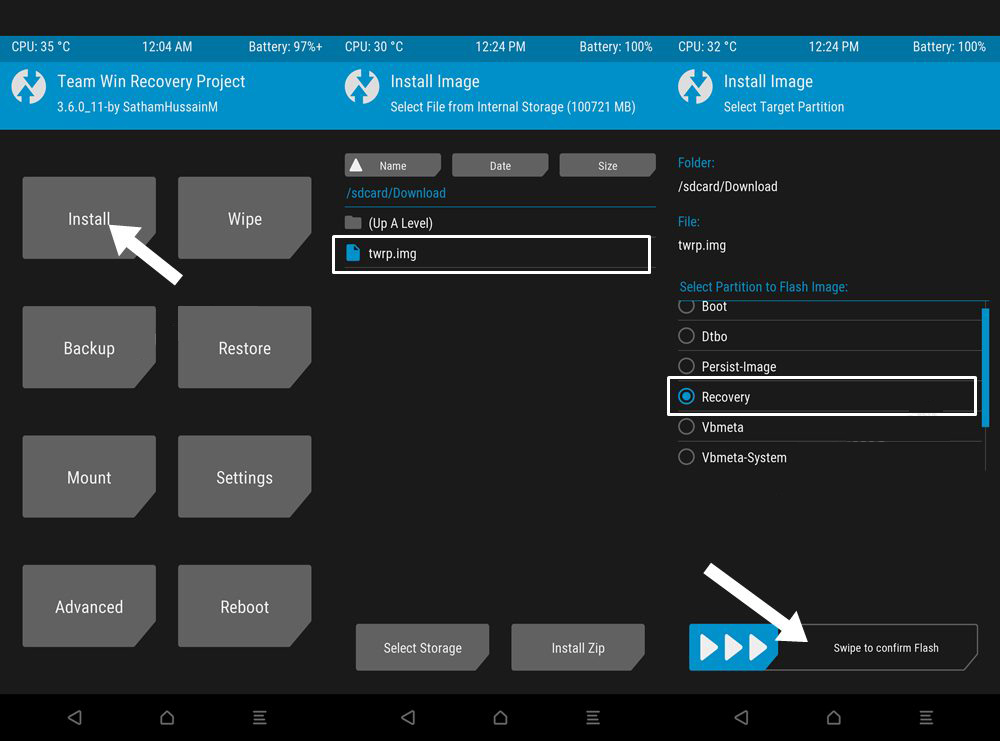
The Team Win Recovery Project (TWRP) is among the most well-known and straightforward Android CRs. This Android recovery is available as open source software. The fact that TWRP is available for almost all Android devices makes it the most straightforward recovery method.
Support for Project Treble features is the most recent update to this conventional recovery. Project Treble is a crucial component of any custom recovery in 2019.
The first reason TWRP Recovery is on our list of the Best Custom Recovery is that it works with a large number of Android devices.
Second, Project Treble features are supported. (Note: this feature functions on your device if it supports Project Treble features.)
- Partition backups in raw image or TAR format.
- Restore backups from OTG devices, external SD storage, or internal storage.
- installation of custom firmware.
- wiping a partition.
- deleting a file.
- access to the terminal.
- Root Shell for ADB.
- Theme Support.
- Possible decryption support, depending on the device.
- It supports almost every Android device.
#2 OrangeFox Recovery Project, or OFRP,
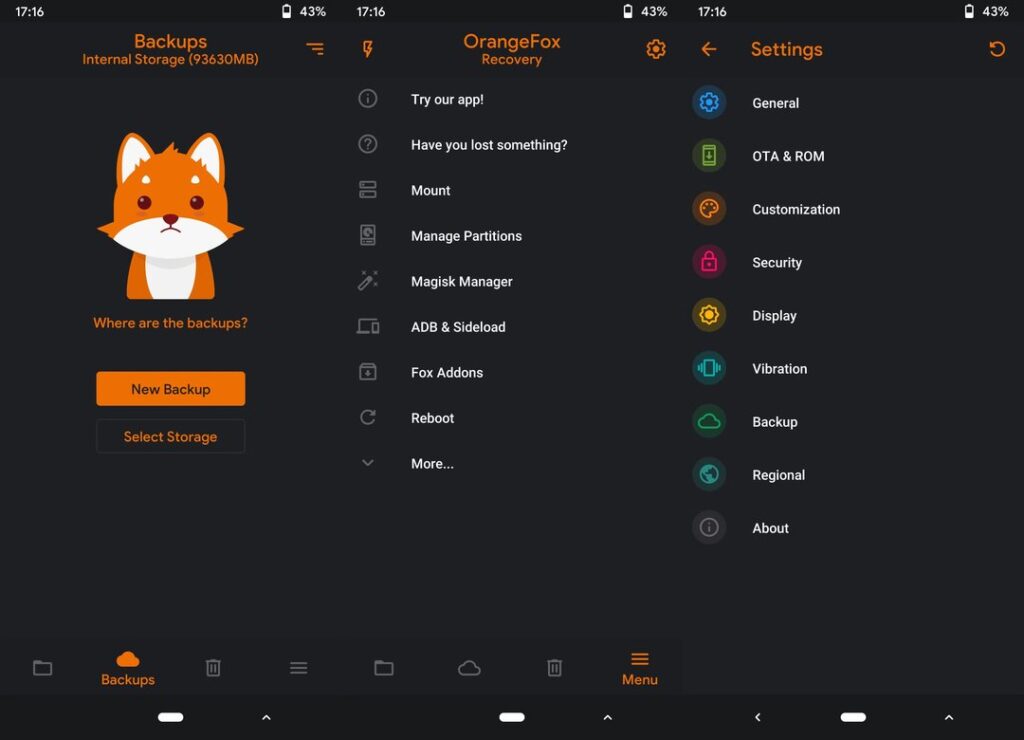
The foundation of OrangeFox recovery is TWRP, with a few extra features. As of writing this post, this recovery, which was first developed for a Xiaomi device, has advanced significantly in terms of stability and design and now supports over 47 devices.
- In line with the most recent Teamwin modifications
- created using the most recent Material Design 2 specifications.
- incorporated incremental block-based OTA and Flyme and MIUI OTA support into custom ROMs.
- Customization is included.
- Built-in fixes, such as the password reset patch and Magisk
- Password security
- Completely open-source
- Regularly updated
#3 The SHRP, or SkyHawk Recovery Project
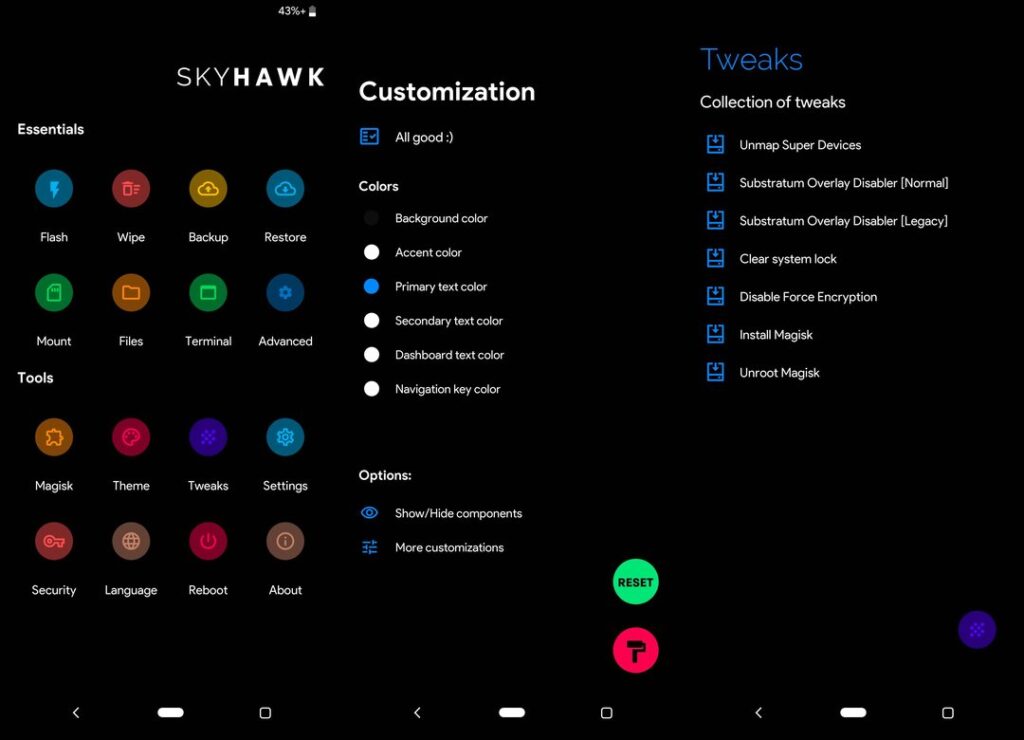
In order to introduce the newest design to the native TWRP, SHRP draws inspiration from Material Design 2. SHRP offers much more than just a rich user interface. Interacting with TWRP is made very simple by the new dashboard.
A brand-new theming section, Flash Magisk (root or unroot), Camera2api enabler straight from the dashboard, password protection, and other cool features are all included in SHRP. It's just the beginning; there is much more to come.
- theme support with a simple, contemporary layout.
- enhanced dashboard with options for faster access.
- Protection with a password lock
- File manager modification
- Built-in compatibility with flashing modules such as ViperFx or Magisk
- Hal3/CameraAPI2—control via the dashboard
- CPU core unlocking and locking
- Customization of the status bar and navigation
- Using the toggle to turn off notch mode
- and a ton of other fantastic features.
#4 RedWolf Recuperation

Although Red Wolf Recovery is a custom recovery built on top of the TWRP source code, some things are functioning a little differently than you might anticipate.
This project's primary goal is to provide stable recovery with features that have never been included in recovery before and have not been approved for inclusion in TWRP's official source code.
In addition, this recovery is the world's first password-protected recovery.
- Constantly current
- Basic material design
- MIUI OTA Assistance
- Protecting Passwords
- Disable forced encryption and DM-Variety.
- Make a backup of every partition.
- Support for Project Treble
- Integrated Magisk, Super SU
- Support for flashlights
Project #5: Pitch Black Recovery [PBRP]
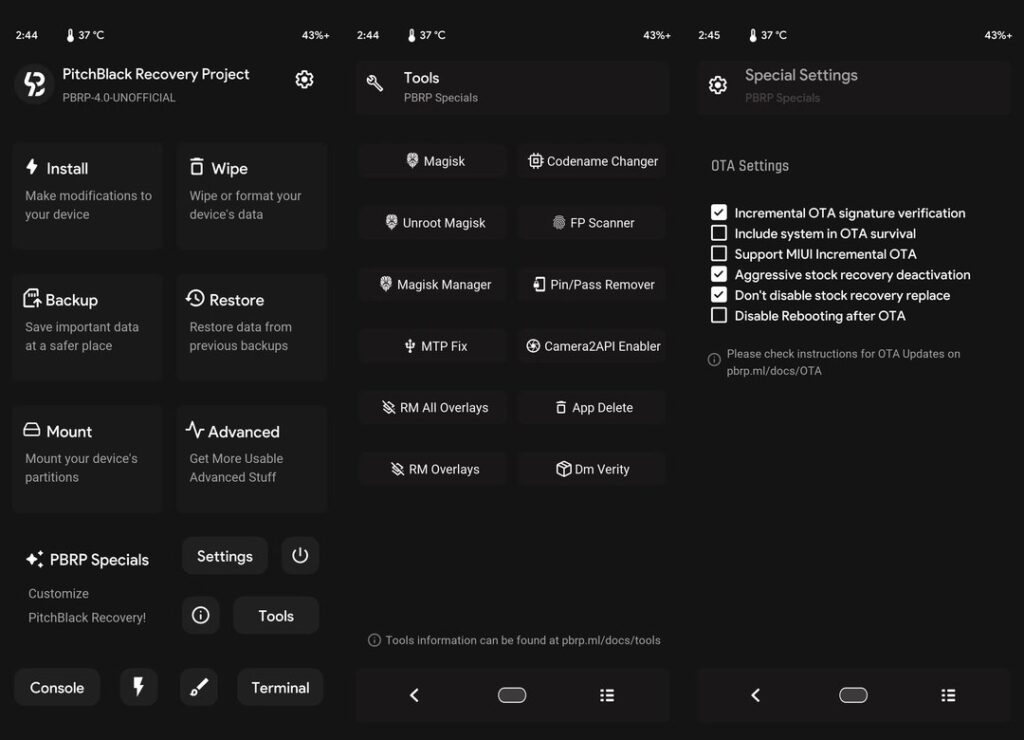
The PitchBlack Recovery Project is an open-source organization that was established on March 28, 2018, by developers from various nations, with the goal of offering the most sophisticated recovery in the world with improved features, customizations, and themes.
- Using the most recent TWRP source
- Both Treble and non-Treble ROMs are supported.
- Excellent tools and features for troubleshooting
- Full dark theme and material design with adjustable accents
- Advanced tools, such as a pin/pass remover and a code-name changer
- Turn off DM Verity
- The default file manager is AromaFM.
- Integrated support for turning on and off Magisk and Super-SU
- A universal flash-able file that works with all device variations
- Support for more than ten languages
- Following ROM flashing, automatic PBRP injection (treble only)
Important Qualities to Consider in a Custom Recovery
| Highlight | Why It Matters |
|---|---|
| Touch UI | simplifies navigation |
| OTA Assistance | permits custom ROM updates. |
| Restore/Backup | guarantees that your system can be recovered. |
| Themes | Aesthetic preferences for advanced users |
| Magisk/Root Flashing | Simple root access without additional equipment |
| Support for Encryption | For more recent gadgets with mandatory encryption |
What Happens If There Isn't a Custom Recovery on Your Device?
Official support may be lacking for some more recent or specialized devices. Then you are able to:
- Look for unofficial TWRP builds on the XDA forum.
- If your device supports Treble, consider using generic GSI ROMs.
- Using the technique below, you can flash even if you don't have a recovery.
Best Practices Following Custom Recovery Installation
- You can flash Magisk to root your device.
- If you're using stock firmware, install a custom ROM.
- Create an Android backup as soon as your recovery has been installed.
- When you're done modding and have flashed the stock firmware back to your phone, lock your bootloader to avoid having a bricked device.
Conclusion: Android's Greatest Custom Recovery
This article covered the following topics: what recovery is, how to flash it, and custom recovery. Finally, we need to know before we can recommend the best custom recovery for Android.
Feel free to use the comment section below if you have any questions about anything.

